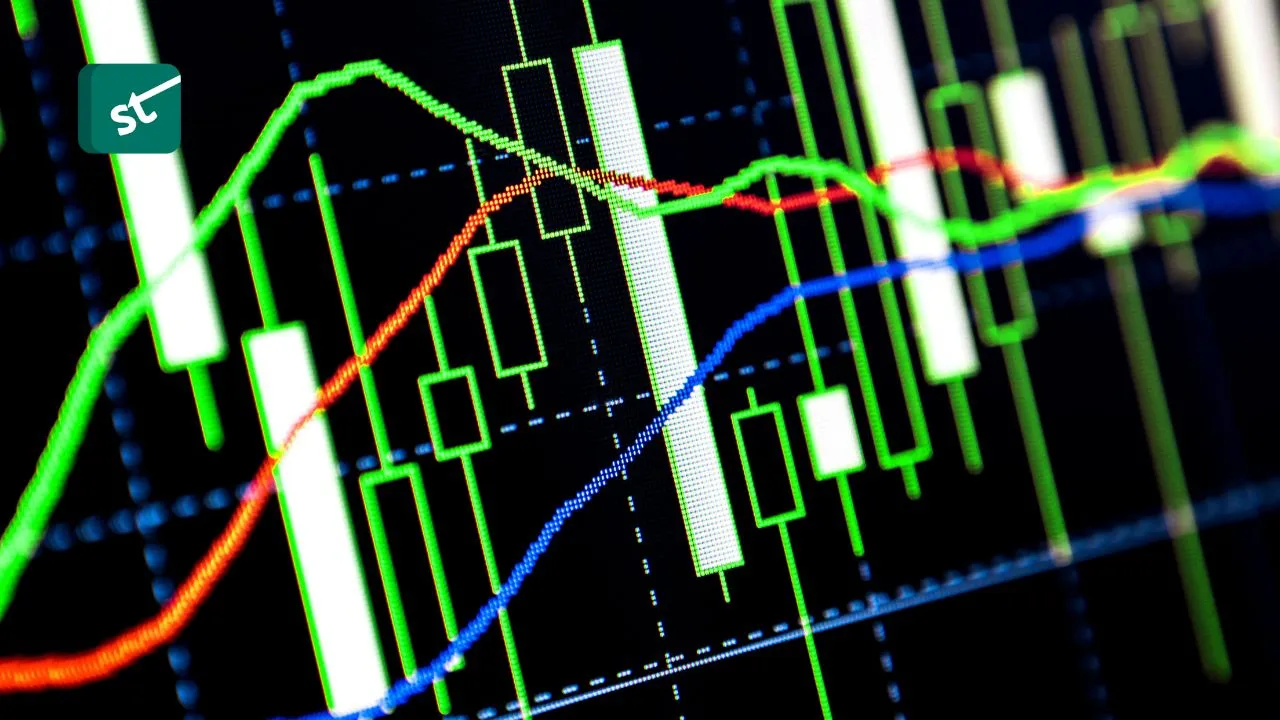What is Enterprise Value? If you’re in the finance or business analysis field, knowing this basic concept is really necessary.
Enterprise Value serves as a comprehensive measure of a company’s total value, encompassing not only its market capitalization but also its debt, cash, and other essential factors.
Because of its broad applications, and usefulness, it is a favored tool by investors, analysts, finance executives, and acquiring firms, all looking to reliably value a given entity, and aid financial decision-making.
In this article, we explore this solid financial measurement, delving into its strengths and application, how to calculate enterprise value and its sheer importance.
We also investigate it in relation to the candle chart context, in order to gain a more holistic view.
If you are looking to find out what is enterprise value, and why it is so prized as a valuation metric across the financial markets in the world, look no further.
In this article, we shed light on this specific domain in a comprehensive manner.
What is Enterprise Value?
Enterprise value (EV) is a common financial measurement that calculates the value of a company.
It is distinct, and more comprehensive than market capitalization, as it factors in a lot more information, such as the liquidity position, and short and long-term debt.
Unlike the standard market capitalization, EV incorporates the value of both classes of financing: debt and equity.
It, therefore, emphasizes the notion that debt providers, along with shareholders, also have a rightful claim on the company’s assets.
Many in the financial markets favor EV as the superior valuation metric, due to its ability to provide a complete picture of an enterprise.
It is used as the basis for core investment decisions such as corporate acquisitions, spin-offs, and internal assessments.
Why is Enterprise Value Important?
Here are a few reasons that make EV such a fundamental tool in finance:
-
It Is an Extremely Comprehensive Valuation Metric
EV stands as being among one of the most complete and holistic measurements of value.
It incorporates both the debt and equity sides of an enterprise, thus painting a reliable picture to turn to.
-
It Provides a Strong Basis for Comparison
Using the EV metric, analysts and investors can compare the values of different companies, which can assist in investment decisions.
-
Assists Financial Management with Internal Decisions
By turning to EV, management personnel from the finance departments can determine which debt levels, capital allocation, and other financial matters would result in the highest valuation for the enterprise.
It is also used to track improvements on a historical basis.
How to Calculate Enterprise Value?
To calculate enterprise value, we use the enterprise value formula:
Let’s break this down to gain a clearer understanding of how to calculate enterprise value and how exactly this calculation works.
We look at all the elements that tie into the EV, which are as follows:

-
Market Capitalization
This is what the market values the company based on individual share prices, and represents the equity side of the enterprise.
Market capitalization is derived by multiplying the share price by the number of outstanding shares.
-
Debt
The total debt is another fundamental portion of the total value of an enterprise, just as equity is, so it too is added to the equation.
It includes all classes of debt, short and long-term, along with every other payable and obligation.
-
Cash and Equivalents
Cash and its equivalents are seen as free assets that can typically be used to pay off debt.
Therefore, they do not add to the EV of a company and are hence subtracted from the equation.
How to Interpret Enterprise Value
The enterprise value tells us a lot more about the company than other metrics generally would. In particular, the EV can shed light on the following domains:
-
Capital Structure
The EV points out the balance between a company’s debt and equity financing, and whether or not this balance is sustainable.
A company with extraordinary levels of debt and low equity would be generally seen as carrying high risk.
-
Industrial Standing
When EV is used for peer analysis, it can highlight how financially healthy a company is in relation to other players in the same industry. This, therefore, reveals the relative financial strength of a company.
-
Financial Performance
EV can also be interpreted in light of a company’s financial performance metric.
An extraordinarily high EV against poor financial performance could indicate serious overvaluation.
Alternatively, a low EV despite excellent performance could point out a potential undervaluation.
-
Macroeconomic Assessment
Managers often interpret EV in relation to the broader market and economic trends to assess how fairly the company’s value stands.
High EV during periods of low-interest rates is seen as a positive indicator, whereas low EV during a high-interest environment can be a potential red flag.
EV vs. Market Cap
Enterprise Value (EV) and Market Capitalization (Market Cap) both provide insights into a company’s worth, but they differ in their scope and focus.
-
Market Cap
Market Cap refers to the total value of a company’s outstanding shares in the stock market.
It is calculated by multiplying the current share price by the number of outstanding shares.
Market Cap primarily reflects the equity side of a company’s value, considering only the market’s perception of its worth.
-
What is Enterprise Value vs. Market Cap
On the other hand, Enterprise value offers a more comprehensive view of a company’s valuation.
EV takes into account not only the market’s valuation of the equity but also considers the company’s debt and other financial obligations.
By incorporating debt, EV recognizes that both debt providers and shareholders have a rightful claim on the company’s assets.
As a result, Enterprise Value provides a more holistic measure of a company’s total value.
EV vs. P/E Ratio
Another important comparison to consider is between EV and the price-to-earnings (P/E) ratio. The P/E ratio measures the valuation of a company’s stock relative to its earnings.
-
P/E Ratio
The P/E ratio is a widely used valuation metric that measures the relationship between a company’s stock price and its earnings per share (EPS).
It is calculated by dividing the market price per share by the EPS.
The P/E ratio is primarily focused on assessing a company’s earnings relative to its stock price and is often used to compare companies within the same industry.
-
What is Enterprise Value vs. P/E Ratio
In contrast, Enterprise Value takes into account the overall value of a company, considering both equity and debt.
EV includes the market value of the company’s equity, but it also considers the impact of debt and other financial obligations.
This broader perspective allows EV to provide a more comprehensive measure of a company’s value, taking into account its entire capital structure.
While the P/E ratio is useful for evaluating a company’s profitability in relation to its stock price, Enterprise Value provides a more comprehensive picture of a company’s overall financial position and investment potential.
4 Benefits of Using Enterprise Value for Business Analysis
Because enterprise value is such a sound measure of value, it comes as no surprise that it is a go-to financial tool in the domain of business analysis.

Listed below are 4 benefits of using EV for business analysis.
-
Determining The Financial Strength of Investment Decisions
Through the use of EV, one can determine the soundness of a business’ investment decisions.
Often companies park their funds in various stocks, and through EV it can determine if shareholder value is being maximized in these financial decisions.
-
Guides Merger and Acquisition Decisions
For larger companies, EV provides essential insight during mergers and acquisitions.
Determining the value of target companies through a comprehensive measure such as EV is a solid means of analyzing its business as a whole.
-
Evaluating Risk Management
Business analysis is incomplete without evaluating risk management, and EV provides clear answers to this regard.
EV can point out a disproportionate overreliance on debt financing, which severely enhances the risk of bankruptcy.
-
Predicts Future Performance
When used in business analysis, EV is a great way to predict the future earnings of a company.
This is when trends of EV multiples and EBITDA are studied over time to determine a benchmark standard, allowing reliable, value-based projections.
Limitations of EV
While Enterprise Value (EV) is a valuable tool for assessing the value of a company, it’s important to be aware of its limitations.
Understanding these limitations can help investors and analysts make more informed decisions and avoid potential pitfalls.
One limitation of EV is that it relies heavily on financial data, which may not always accurately reflect a company’s true value.
Financial statements can be subject to manipulation or may not capture intangible factors that contribute to a company’s worth, such as brand value or intellectual property.
Additionally, EV calculations rely on assumptions and estimates, such as the appropriate discount rate for future cash flows.
These assumptions can introduce inherent uncertainties into the valuation process.
Moreover, EV is more suitable for comparing companies within the same industry rather than across different sectors.
Each industry has unique characteristics, and using EV as a sole measure of value without considering industry-specific factors may lead to misleading comparisons.
Lastly, EV does not take into account potential future events or changes in market conditions that could significantly impact a company’s value.
It’s crucial to complement EV analysis with other tools and indicators to gain a comprehensive understanding of a company’s valuation.
Example of EV
Let’s examine the enterprise value (EV) of two prominent companies, Apple Inc. (AAPL) and Microsoft Corporation (MSFT).
Enterprise Value Formula = Market Cap + Debt – Cash
Apple Inc. (AAPL)
- Market Cap: $2.999 Trillion
- Debt: $06 Billion
- Cash and Cash Equivalents: $23.46 Billion
To calculate the EV for Apple Inc., we can apply the enterprise value formula:
EV = $2.999 Trillion + $120.06 Billion – $23.46 Billion
EV = $3.0956 Trillion
Microsoft Corporation (MSFT)
- Market Cap: $2.507 Trillion
- Debt: $27 Billion
- Cash and Cash Equivalents: $13.93 Billion
Calculating the EV for Microsoft Corporation:
EV = $2.507 Trillion + $61.27 Billion – $13.93 Billion
EV = $2.55437 Trillion
These examples demonstrate how EV incorporates both debt and equity aspects to provide a comprehensive valuation of a company.
As of July 7, 2023, Apple Inc. has an enterprise value of approximately $3.0956 Trillion, while Microsoft Corporation’s EV stands at around $2.55437 Trillion.
By considering the company’s debt and liquidity positions, enterprise value offers a more holistic perspective on the overall worth of a business.
It allows investors, analysts, and financial decision-makers to assess a company’s valuation in a comprehensive manner and make the right decisions based on a more complete understanding of its financial structure.
How To Use Enterprise Value
Enterprise Value (EV) is a versatile metric that can be used for various financial analyses and decision-making processes. Here are some key ways to effectively utilize EV:
-
Valuation Comparisons
EV allows for meaningful comparisons between companies within the same industry.
By calculating and comparing EV multiples (such as EV/EBITDA or EV/Sales) for different companies, investors and analysts can assess relative value and identify potential investment opportunities.
-
Mergers and Acquisitions
EV is crucial in merger and acquisition (M&A) analysis.
By calculating the EV of both the acquiring and target companies, stakeholders can evaluate the potential synergies and financial impact of the transaction.
EV serves as a fundamental tool in determining the fair value of the target company and negotiating the terms of the deal.
-
Financial Planning
EV provides insights into a company’s financial structure and capital allocation decisions.
Finance departments can use EV to assess the impact of different financing options, such as debt levels and capital structure changes, on the company’s overall valuation.
It helps optimize financial strategies and track improvements over time.
-
Forecasting and Projections
EV can be used to predict future financial performance.
By analyzing trends in EV multiples and other financial indicators over time, analysts can establish benchmark standards and make reliable projections.
EV-based projections provide a value-based perspective on a company’s potential growth and performance.
How To Read the Candle Chart?
A candle chart, especially when part of a wider pattern, delivers a lot of information about price movements.
Accessing this valuable insight requires one to know how to read the candle chart.

To be able to read a candle chart, traders must be aware of the various types of candlestick patterns and technical indicators that relate to such charts.
The following basic elements are crucial to understand, for one to gain useful insight through a candle chart:
-
Body
The body is the distance between the opening and closing prices of a stock, during a particular time frame.
The longer the body, the higher the movement in price during that time.
When the closing price is higher than the opening, the body is usually green, otherwise, it is represented as red.
-
Wicks
Throughout the trading period, the security price moves between highs and lows.
The highest price point achieved during the period is shown through the high end of the wick, whereas the lowest point is shown through the low end of the wick.
-
Timeframe
Every candle in the chart represents a specific time frame, which could range from 15 minutes, an hour, or even a full 24-hour period.
-
Trend
When a series of candles is assessed as part of a wider pattern, they point out a trend that is very insightful about the broader price movements, and whether they are bearish, bullish, or in a state of uncertainty.
Using EV to Interpret Candle Chart Patterns
Retail traders are typically more interested in technical indicators to interpret candle chart patterns than valuation metrics.
However, many turn to enterprise value when looking to carry out a broader fundamental assessment of the stock they are monitoring.
Because candle chart patterns deal with bearish and bullish movements, traders are usually interested in whether the stock is under or overvalued.
This can be done by assessing a stock based on its EV multiples.
This helps predict if a price correction is imminent. EV sheds light on a specific aspect of a company’s valuation, and traders can turn to a broader set of tools for a more informed decision.
Ultimately, the use of EV would depend on the specific approach and trade strategy followed by the trader.
Understanding Market Sentiment with Enterprise Value and Candle Charts
EV and candle charts both shed light on different dimensions of the market. When brought together, however, they can be used to assess wider market sentiment.

In times of market optimism, the enterprise value would generally be higher, despite low earnings, which could suggest wider bullish sentiment.
Alternatively, when EV is consistently low despite high earnings, it is evident that market sentiment is overwhelmingly bearish.
Similarly, patterns from a candlestick chart could be used to enhance the findings from EV on market sentiment.
These patterns could reveal, through buying and selling behavior, the general mood of the overall market.
Making Informed Business Decisions with Enterprise Value and Candle Charts
Both EV and Candle Charts emphasize the notion that, although different metrics provide different perspectives on a company’s financial health, they can be brought together to enhance overall decision-making.
While enterprise value explores the fundamentals of a company’s value in its financial structure, and the candle chart reveals short-term trading patterns, they complement each other and help outline sentiment while predicting future movements and performance.
Where the EV focuses on long-term fundamentals, candle charts look into short-term movements.
Together, both tools hold important roles in stock analysis and are critical measures that guide decision-making.
Conclusion
Enterprise value is a powerful tool that allows market participants to value companies.
Unlike similar metrics like market capitalization, it factors in debt financing to give a more holistic take on determining the value of a company.
The use of EV significantly aids decision-making by exploring the financing structure of a particular enterprise, and hence the overall financial sustainability.
The metric is especially useful in guiding investment decisions.
When used alongside tools like the candle chart, EV sheds light on areas such as market sentiment and allows analysts and investors to predict financial performance.
EV empowers its users by delivering a deeper understanding of a company’s financials.
FAQs
How Do You Draw Candle Charts?
A candle chart is drawn by plotting a stock’s opening price, closing price, and highest and lowest points in a specific time frame.
The opening and closing prices will determine the length of the body, whereas wick lengths will show the highest and lowest price points.
What Is Enterprise Value and Why Is It Important?
Enterprise value (EV) is the total value of a company, calculated by adding its market capitalization, debt, and other financial obligations, and subtracting its cash.
It is important because it provides a comprehensive view of a company’s worth, including its debt.
EV is used in financial analysis, mergers, and acquisitions, and helps assess a company’s performance and financial health.
Which Candle Type Is Best for Trading?
The best candle type will differ with each trading strategy and the state of the wider market.
Traders will typically be most successful when they are able to soundly interpret the pattern, while tying their analysis to a broader metric, like enterprise value.
What Is Enterprise Value Vs Market Value?
Enterprise value tells us the value of a company’s total equity and debt financing, whereas market value focuses predominantly on the equity side of the enterprise.









